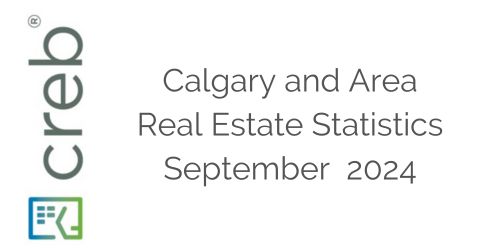There are many professionals you’ll encounter during the purchase and sale of your home, the top of the list typically includes your REALTOR® and a real estate lawyer.
Real estate lawyers are responsible for ensuring the transaction is in your best interest and clear of any legal issues. They help stickhandle everything from leading the title search and registration process, providing title insurance and drawing up mortgage documents, to prepping the deed and statement of adjustments, and ultimately handing you the keys to your new home.
We spoke with a real estate lawyer to get answers to the most common questions about why and what they do.
When do you need a real estate lawyer?
Both buyers and sellers should work with a real estate lawyer as soon as their casual home search becomes more serious.
Jeffrey Kahane, a real estate, wills, and estates lawyer with Kahane Law Office in Calgary, Alberta, encourages buyers and sellers to consult a lawyer “as soon as they have any questions or concerns.”
“We prefer—and don’t charge more—to get called on when people have questions so we can ensure the contract properly protects them,” Kahane says, adding they “typically don’t get called upon until the contract is firm, but we are happy to help at any stage to ensure things run smoothly for our clients.”
How do you choose a real estate lawyer?
There are a few factors to consider when you’re ready to choose a lawyer. Having a few screening questions in mind could help you decide which lawyer or firm to use:
How long have they been practicing real estate law in their respective province?
Will they be working alone or with a team?
How will they be billing you?
How long will it take to get things moving?
Can they provide references?
Your REALTOR® can provide a list of contacts they trust and have worked with before, to help narrow down your search, but you’re not obligated to use their recommendation.
How much does a real estate lawyer cost?
Lawyer fees will vary depending on the firm, how they charge (flat rate or hourly), and any disbursements incurred. Disbursements are the costs associated with title searches, any photocopies made, or anything else the lawyer does with a cost attached to it. Lawyer fees are what you pay for the lawyer’s actual time. According to Canadian Lawyer Magazine, Canadians can expect to pay anywhere from $700 to $2,000 (again, depending on your situation) in fees and disbursements during the entire process. Their payment will be required at the end of the closing process.
What do real estate lawyers do for buyers and sellers?
Lawyers can represent both the buyer and the seller, “but both parties have to agree, ensuring there is full disclosure between buyer and seller,” shares Kahane.
Why Buyers Need Lawyers
When it comes to what real estate lawyers do for buyers, Kahane explains they “draft purchase documents and the mortgage, as well as get funds from the lender, ensure there are no debts associated with the property, and facilitate payment for the property.” He adds “it’s also our job to ensure the survey complies with the contract.”
Real estate lawyers are required no matter what kind of property you’re buying. New build, resale, condo, freehold, land, commercial—a real estate lawyer will help ensure you receive a fair, legal contract.
New builds
When purchasing a new build, your real estate lawyer will review your Agreement and Purchase of Sale, which typically includes Statement of Critical Dates, conditions, rights and obligations, occupancy, termination clauses, early termination conditions, and list of closing adjustments the vendor proposes. Your lawyer will also review clauses and conditions to see what can be negotiated, reviewed, or added for your benefit. They’ll also identify any hidden purchase restrictions, or anything that’s important to note before taking possession of your home.
Buying land
When buying land, you’ll want to find a lawyer who specializes in property law. They’ll conduct a title search to make sure there aren’t any issues with the land you’re looking at, review your contract to make sure conditions are in your favour, ensure all zoning and land use regulations are compliant with any applicable laws, and will conduct an environmental assessment before purchasing a property to make sure all regulations are met.
Condos
For condo purchases, real estate lawyers will review the Status of Certificate to make sure the reserve fund is healthy and identify whether any major repairs or renovations will be required in the near future, which could mean big costs coming up for all owners.
Joint tenancy
Your lawyer will also help understand the ins and outs of owning property with another person. There’s joint tenancy with rights of survivorship, which means if one owner dies, their share is passed on to the other owner—in this case, it doesn’t go through the deceased’s estate. There’s also tenancy in common, where each owner decides who will get their portion of the property should they pass away. A real estate lawyer will be able to help navigate how you want to manage your share of the property, if applicable.
Why Sellers Need Lawyers
In terms of supporting sellers, real estate lawyers similarly assist them in the smooth progress of the transaction. Kahane shares their role entails, “drafting sale documents and sending them to the buyers’ lawyer on trust conditions, payout debts on title, real estate commissions, and net funds to the client.”
Why Lawyers Benefit Both Parties
“Without our involvement, lenders won’t simply hand the funds over to a buyer or seller—they require the security,” Kahane stresses, adding “including a lawyer is also the only way to ensure buyers get the property free of debts and the sellers get their money.”
What do real estate lawyers do at closing?
While real estate lawyers are great resources throughout the entire buying and selling process, lawyers play an active role in the remittance at closing, ensuring money and asset transfers are done safely and successfully.
“If there’s a problem on closing, the lawyer can try to resolve it between the parties,” shares Kahane.
Remember, your REALTOR® is a great asset and can help connect you with a dependable real estate lawyer when you’re ready to sell or purchase a home. As they are an important component in the transaction as a whole, and particularly in the area of closing, relying on your REALTOR® to introduce you to a real estate lawyer can give you peace of mind that you’ll be connected with a reputable professional.









